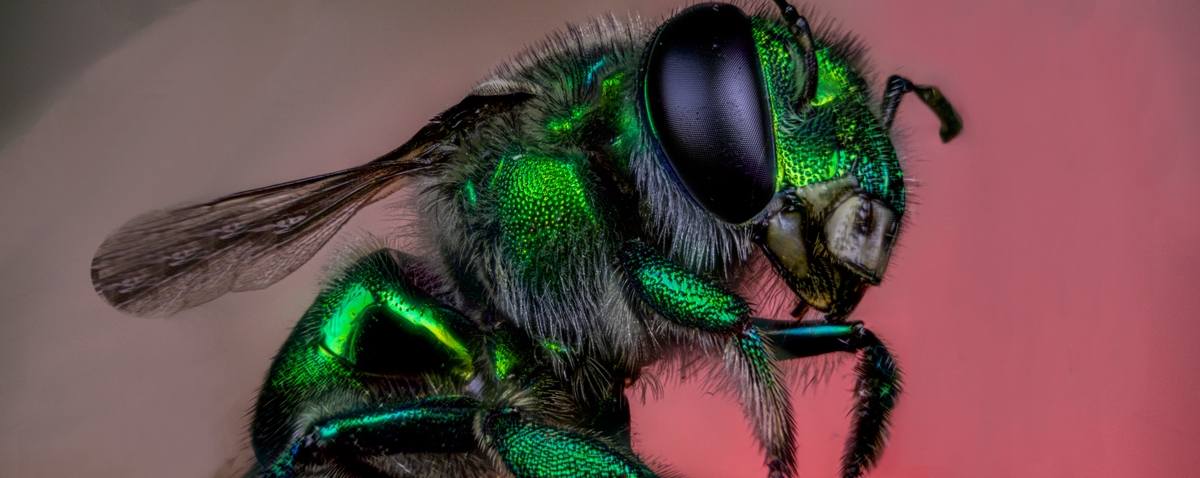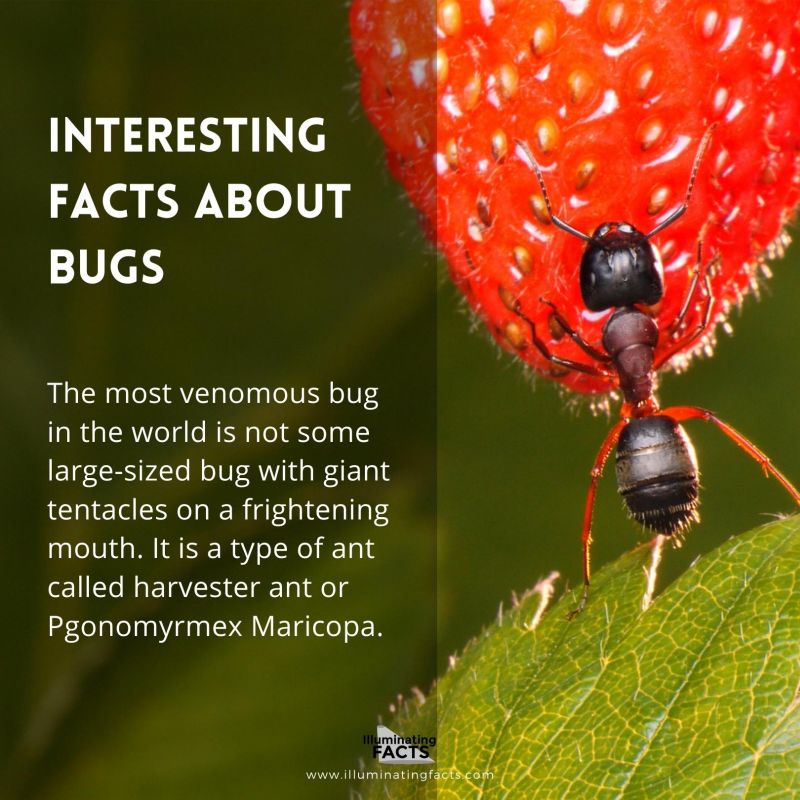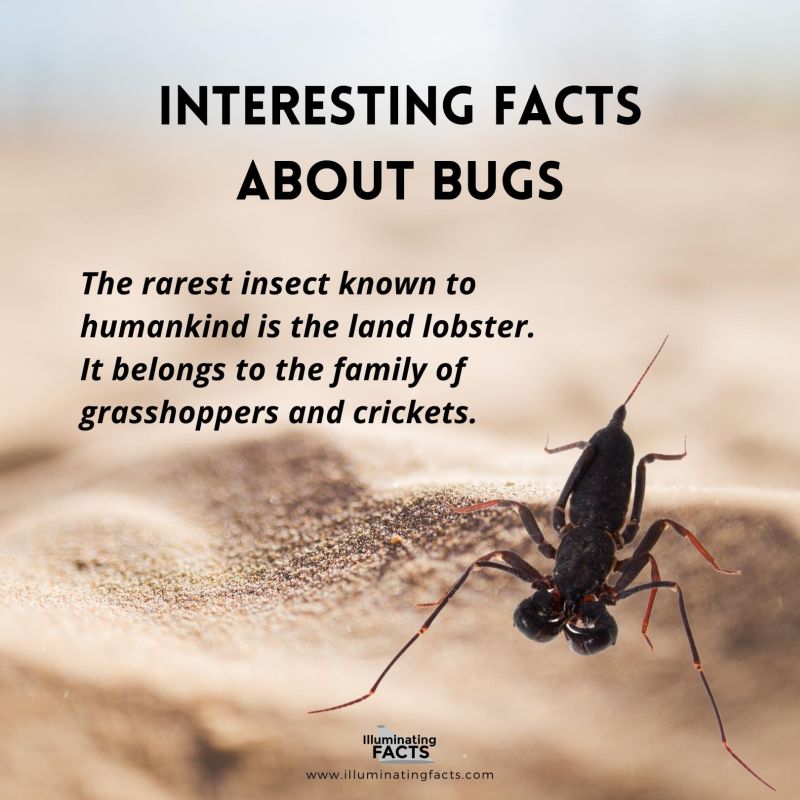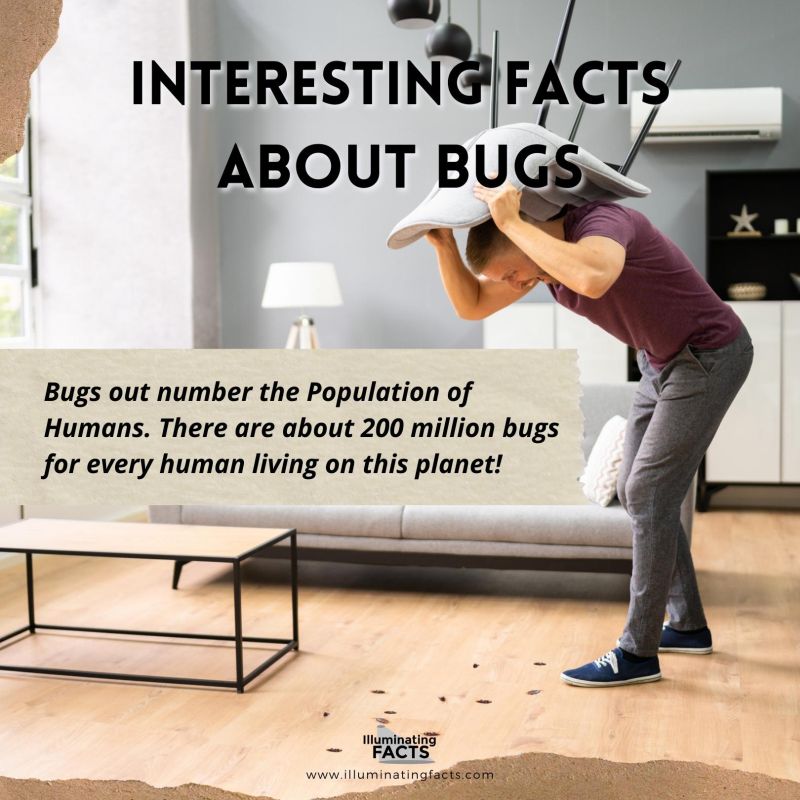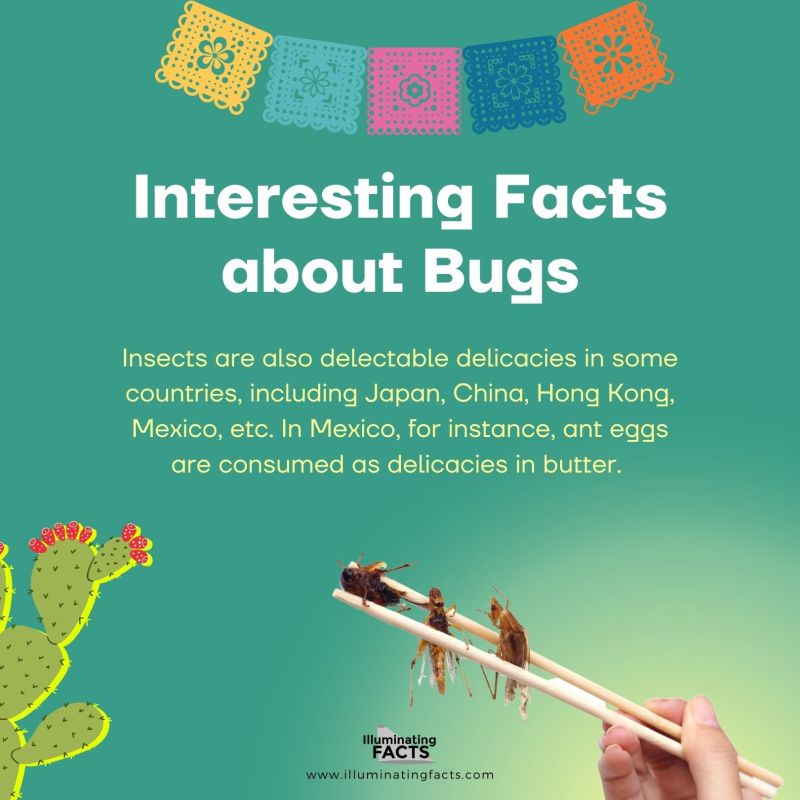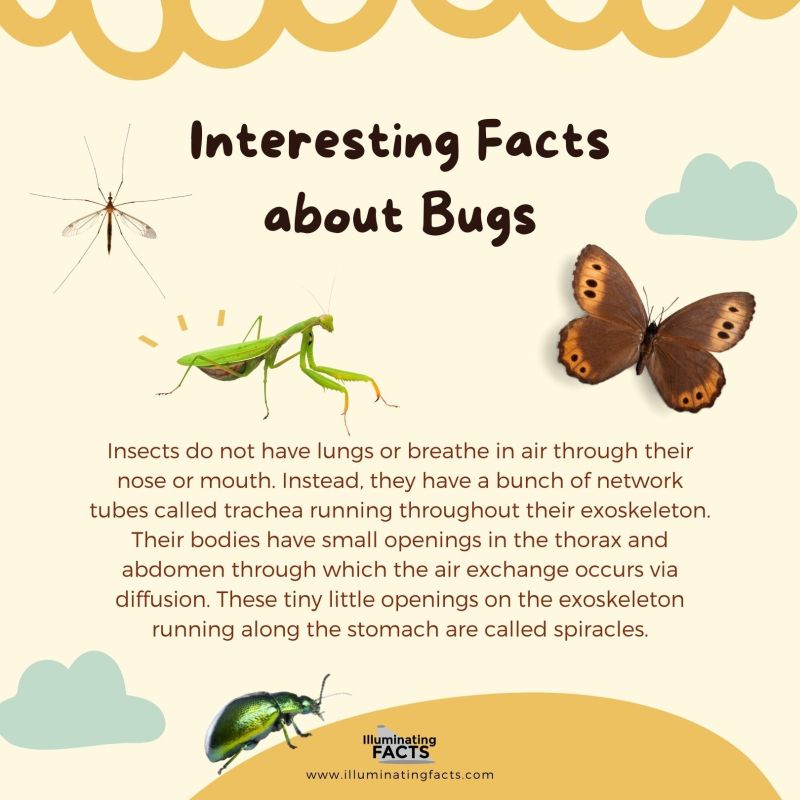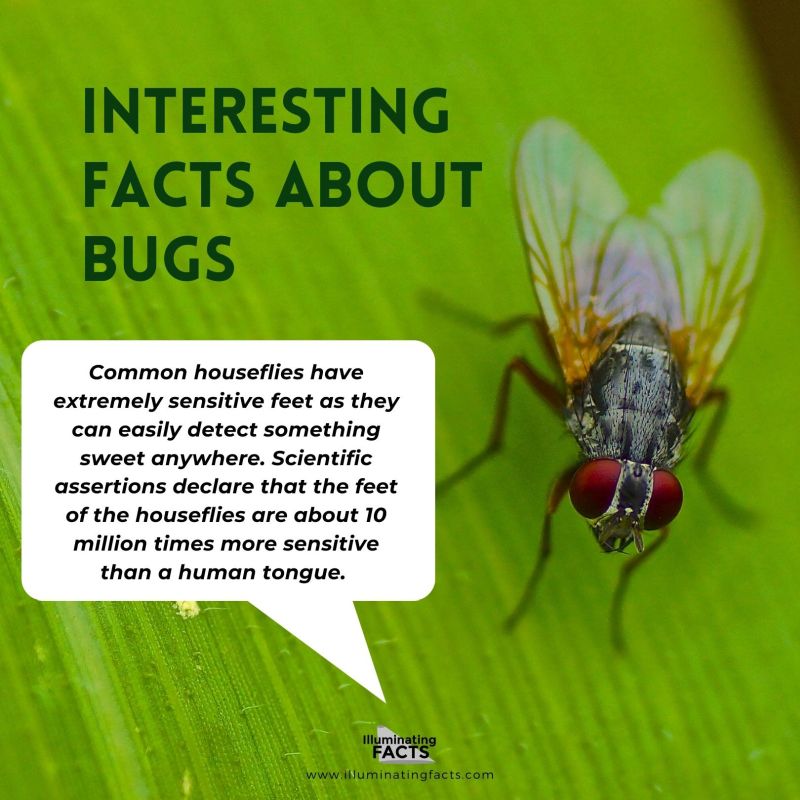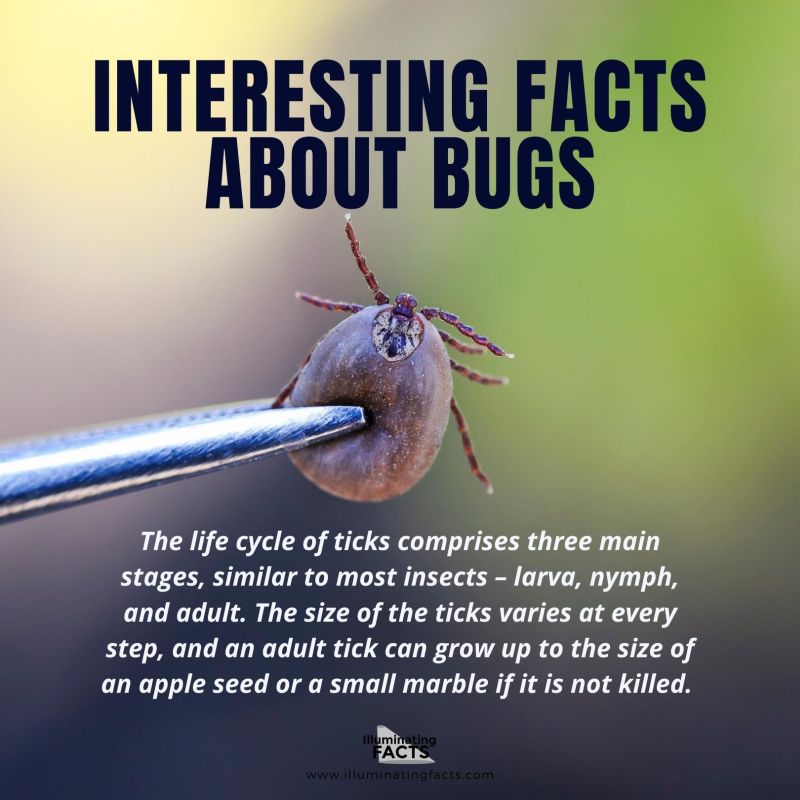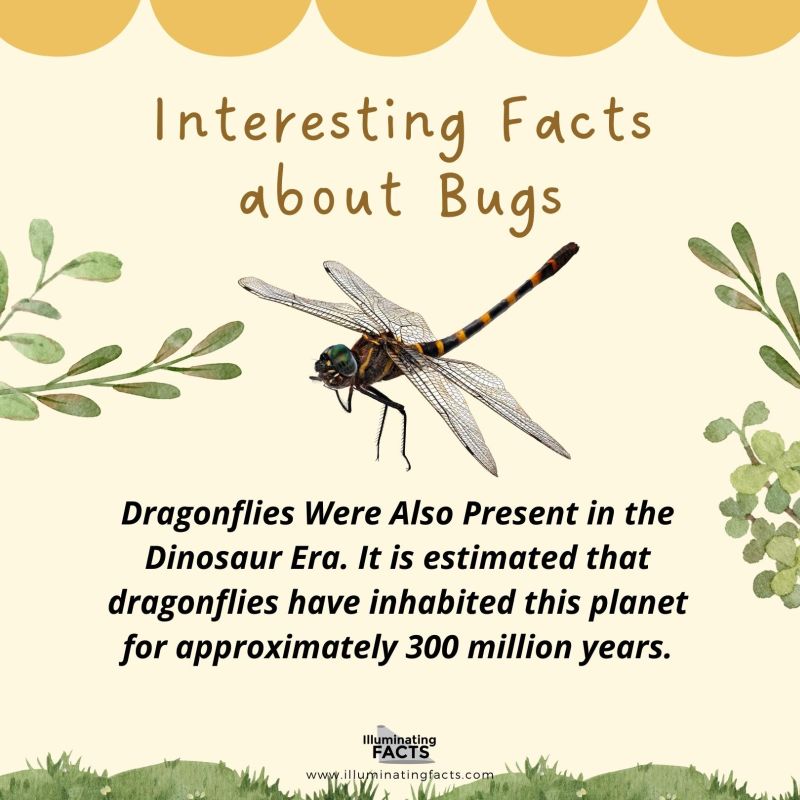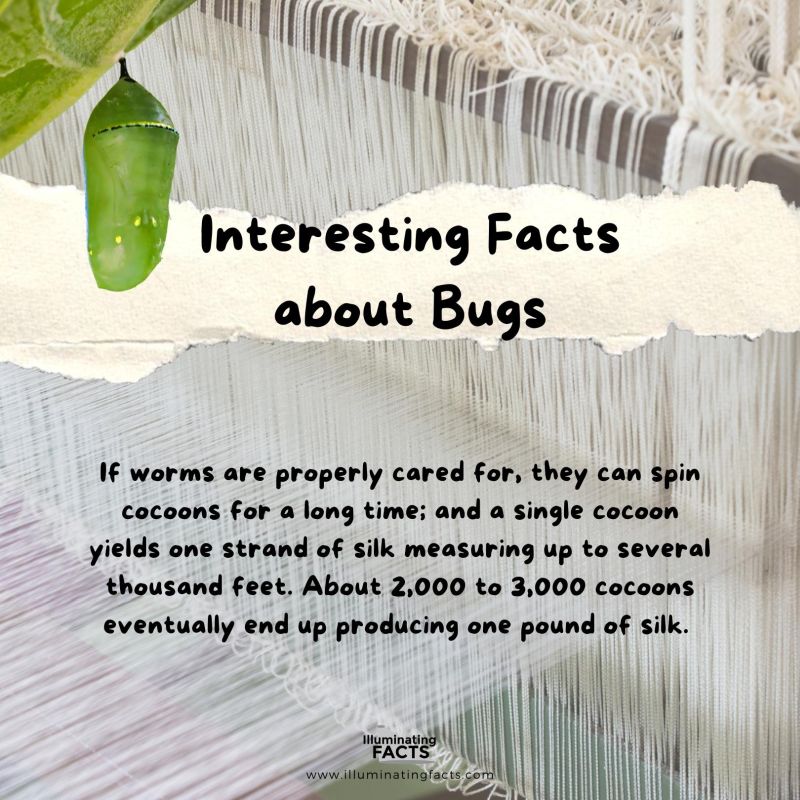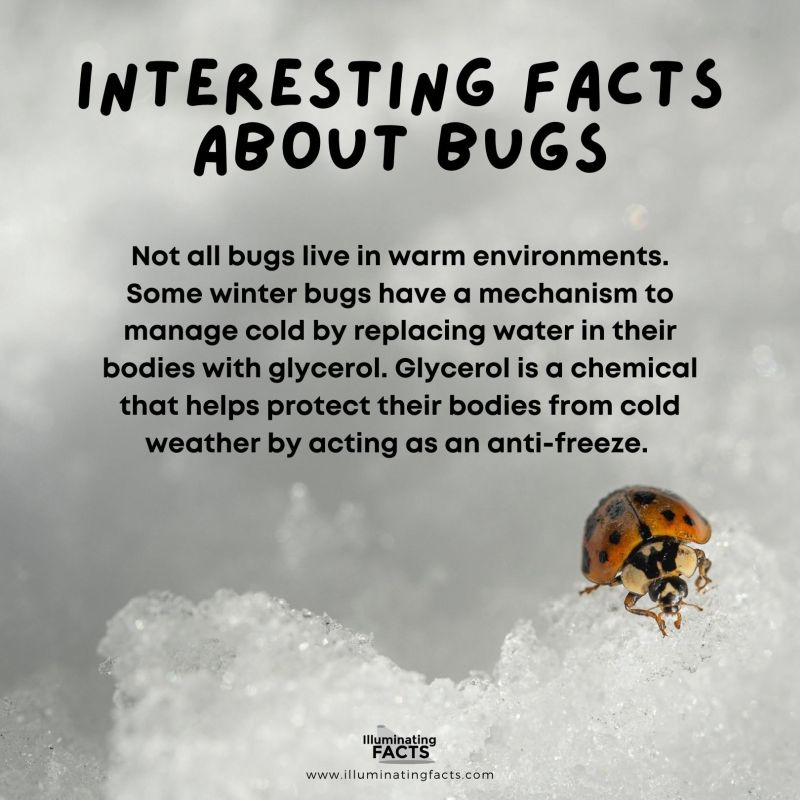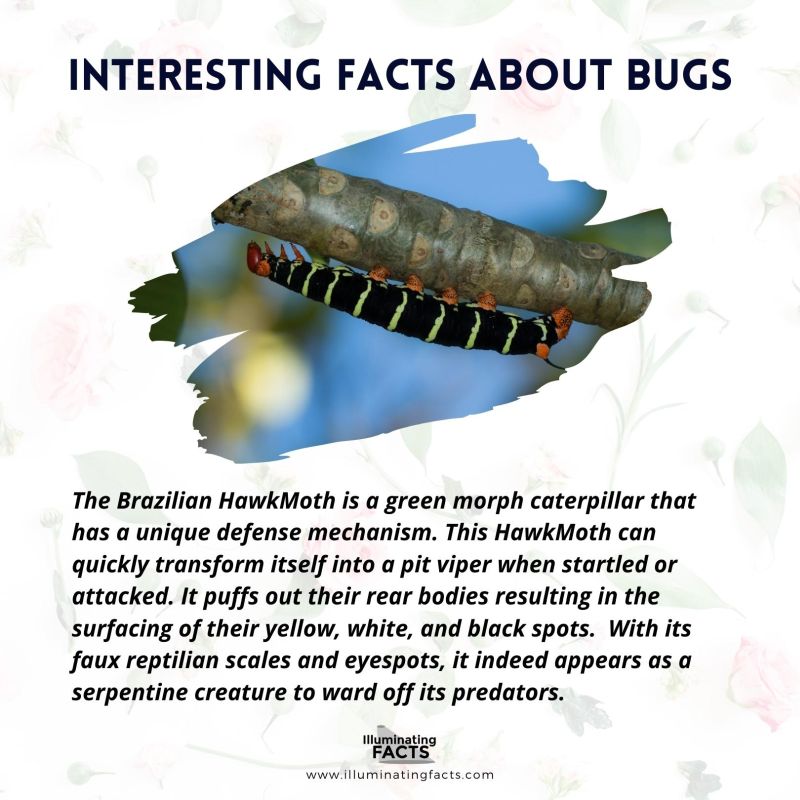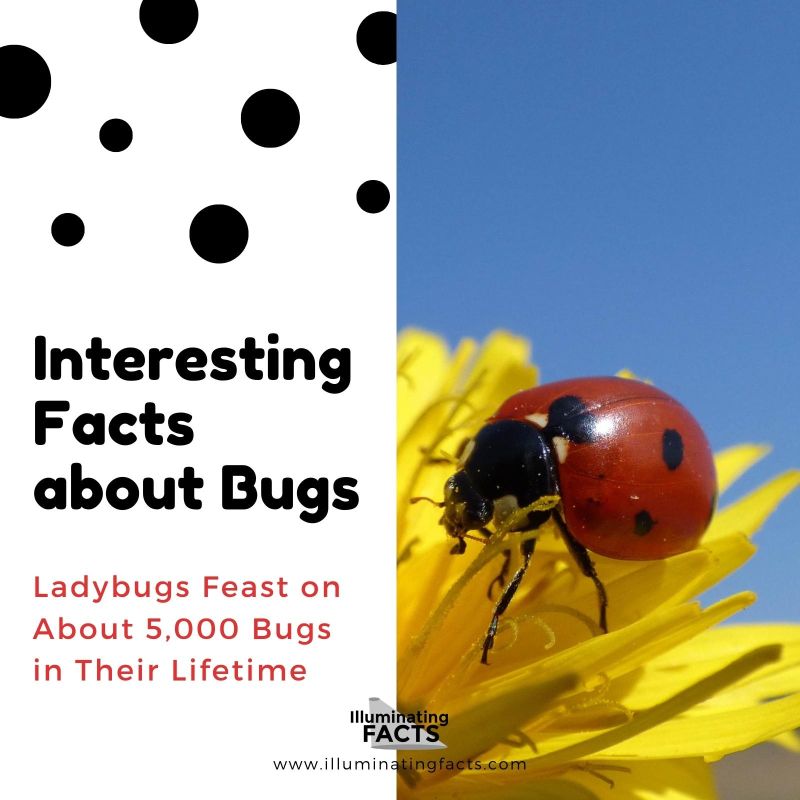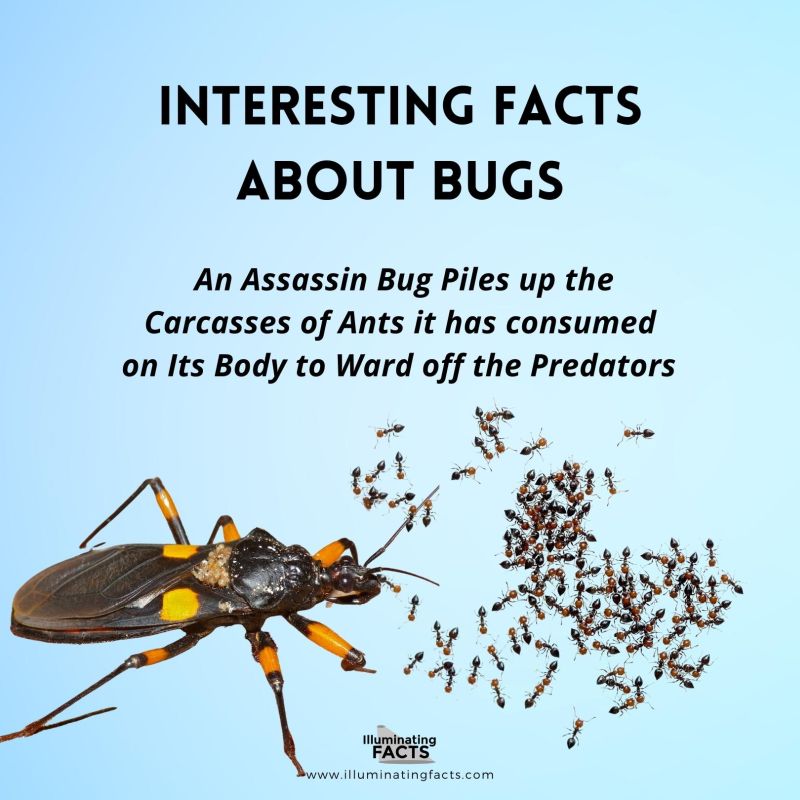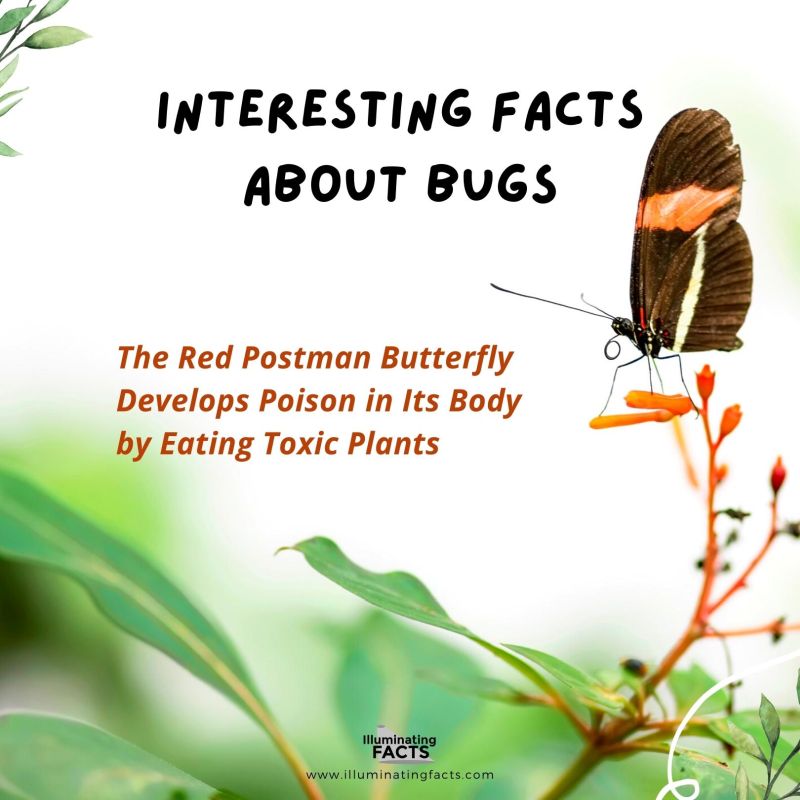The very thought of bugs might make some people shudder, but the truth is that we all have to live with these little creatures to some extent. Bugs can be found everywhere; they’re on every continent and even on our bodies! Whether we like it or not, many homes will have bugs inside them, especially if there are any plants around.
However, these ubiquitous bugs are very interesting creatures. Some of them might even be beneficial to us in many ways. Since we have to co-exist with bugs in any case, we should find out as much about them as possible. The facts below will help you get a start on the world of bugs:
1. The Oldest Bug on the Planet is saved in the form of a Fossil
The fossil of the oldest bug known to humans is preserved safely. This bug is a 425-million years old millipede discovered on the island of Kerrera in Scotland. This oldest bug is older than any insect, creepy-crawly, or arachnid found by humans. [1]
2. Harvester Ant is the Most Venomous Bug of All
The most venomous bug in the world is not some large-sized bug with giant tentacles on a frightening mouth. In fact, it is instead a type of ant called harvester ant or Pgonomyrmex Maricopa. It belongs to the rare kind of ants that sting. These ants are up to five to seven millimeters in length and live in arid chaparral habitats.
Harvester ants are primarily found in the Southwestern regions of the US. [2]
3. Land Lobsters Are the Rarest Insects Worldwide
The rarest insect known to humankind is the land lobster. It belongs to the family of grasshoppers and crickets. The land lobsters were quite prominent in numbers around their native island, Lord Howe Island, and could be found everywhere.
However, they are now extinct as a significant part of their population was destroyed in 1918. A big steamship was stuck at the island shore in 1918, and the rats on the ship escaped and attacked the land lobsters. Since then, the species of this rarest insect has been endangered. [3]
4. Bugs Outnumber the Population of Humans on The Planet
Have you ever wondered how big this population of tiny insects or creepy-crawly is? Let us state it in the easiest ways to understand. There are about 200 million bugs for every human living on this planet! It is only an estimate, and the actual numbers could be higher, as there might be numerous other species humans have not discovered yet.
Another frame of reference to understand how the population of bugs outclasses humans is that there are approximately 300 pounds of bugs for every pound of human! [4]
5. Insects are Delicacies in Some Countries, Such As Mexico
Insects are also delectable delicacies in some countries, including Japan, China, Hong Kong, Mexico, etc. In Mexico, for instance, ant eggs are consumed as delicacies in butter. They also consume locusts covered in chocolate and worm candies.
A popular alcoholic drink in Mexico is called Oaxaca, which is sold under the name of mezcal. It contains worms in it and is quite popular in the country. [12]
6. Insects Breathe Through Their Bodies
Insects do not have lungs or breathe in air through their nose or mouth. Instead, they have a bunch of network tubes called trachea running throughout their exoskeleton. Their bodies have small openings in the thorax and abdomen through which the air exchange occurs via diffusion. These tiny little openings on the exoskeleton running along the stomach are called spiracles. [5]
7. The Strongest Insect is the Dung Beetle
While ants are well-known for carrying heavy weights and managing to do quite laborious work, they are not the strongest among all insects. Instead, the dung beetle is known to have an astonishing ability for carrying weight as heavy as 1,141 times its body weight. [13]
8. Houseflies Have Extremely Sensitive Feet
Another interesting fact about bugs is related to the sensitivity of the feet. Common houseflies have extremely sensitive feet and they can easily detect something sweet anywhere. Scientific assertions declare that the feet of the houseflies are about 10 million times more sensitive than a human tongue. [14]
9. Adult Ticks Can Grow Up To the Size of a Small Marble if Not Killed
Typically, the life cycle of ticks comprises three main stages, similar to most insects – larva, nymph, and adult. The size of the ticks varies at every step, and an adult tick can grow up to the size of an apple seed or a small marble if it is not killed.
The largest tick known to humanity is the American dog tick, also called Dermacentor variabilis. It is usually found in the eastern states of the US and often in some parts of the west coast. [6]
10. Dragonflies Were Also Present in the Dinosaur Era
Humans have been around this planet for roughly about 300,000 years. However, several insects, such as dragonflies, have been alive for more than that. It is estimated that dragonflies inhabited this planet for approximately 300 million years, making them older than the initial dinosaur era. [15]
11. About 3,000 Cocoons Make One Pound of Silk 
If worms are properly coddled, they can spin cocoons for a long time; and a single cocoon yields one strand of silk measuring up to several thousand feet. About 2,000 to 3,000 cocoons eventually end up producing one pound of silk. [7]
12. Bees Can Travel a Lot in One Day 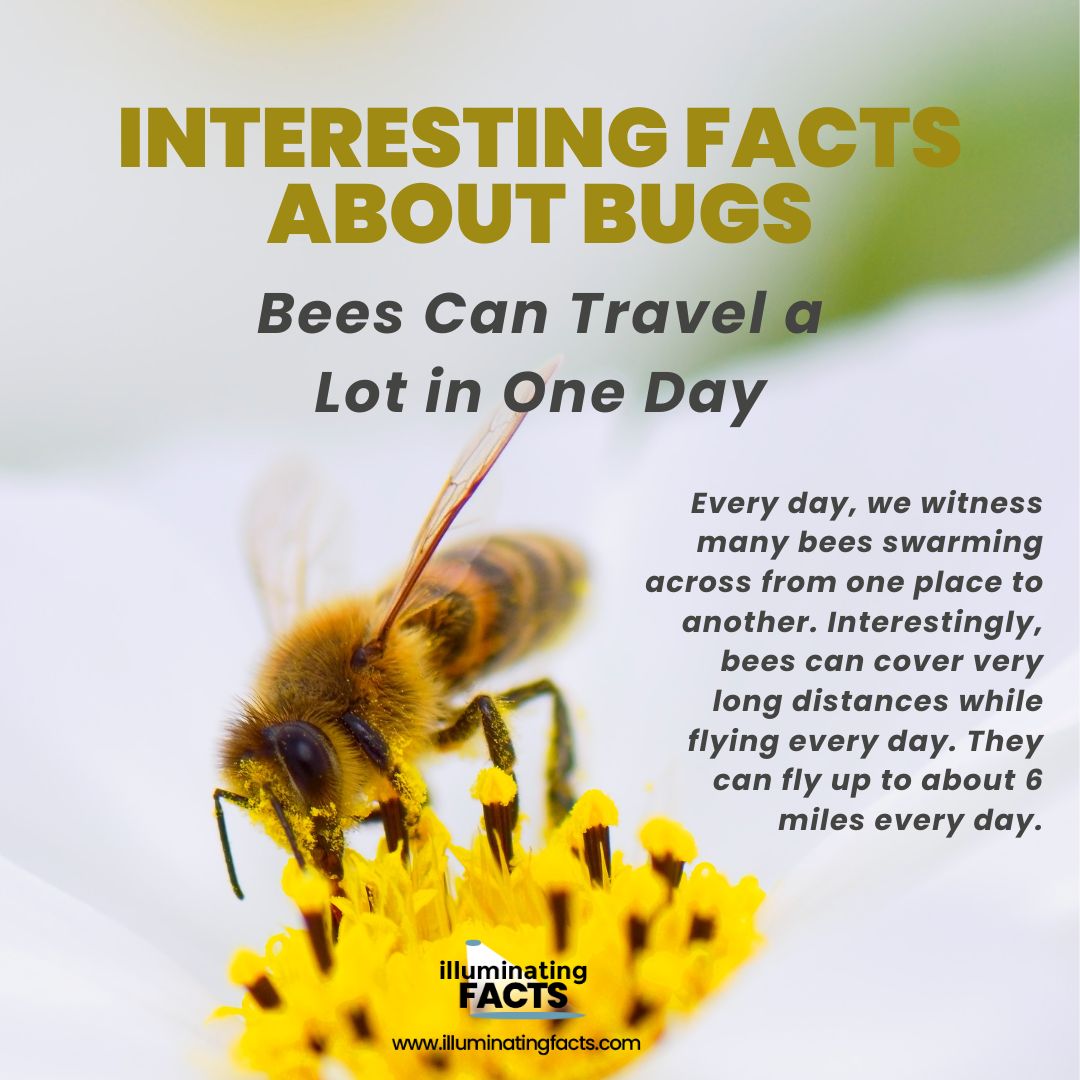
Every day, we witness many bees swarming across from one place to another. Interestingly, bees can cover very long distances while flying every day. They can fly up to about 6 miles every day.
13. Honey is Not Easily Made in Just a Few Hundred Trips 
Honeybees have to make numerous trips from the hive to the flowers to produce honey. Usually, the working bees have to make the trips and feed the larvae.
In a single flight from the hive to the flowers, a honeybee visits 50 to 100 flowers to collect nectar for honey. [16]
14. Some Bugs Can Easily Survive Winter 
Not all bugs live in warm environments. Some winter bugs have a mechanism to manage cold by replacing water in their bodies with glycerol. Glycerol is a chemical that helps protect their bodies from cold weather by acting as an anti-freeze. [17]
15. You Might Mistake a Brazilian Hawkmoth Caterpillar with a Snake 
Brazilian HawkMoth is a green morph caterpillar that has a unique defense mechanism. This HawkMoth can quickly transform itself into a pit viper when startled or attacked. It puffs out their rear bodies resulting in the surfacing of their yellow, white, and black spots.
With its faux reptilian scales and eyespots, it indeed appears as a serpentine creature to ward off its predators. [8]
16. Bugs Are Also Carnivorous 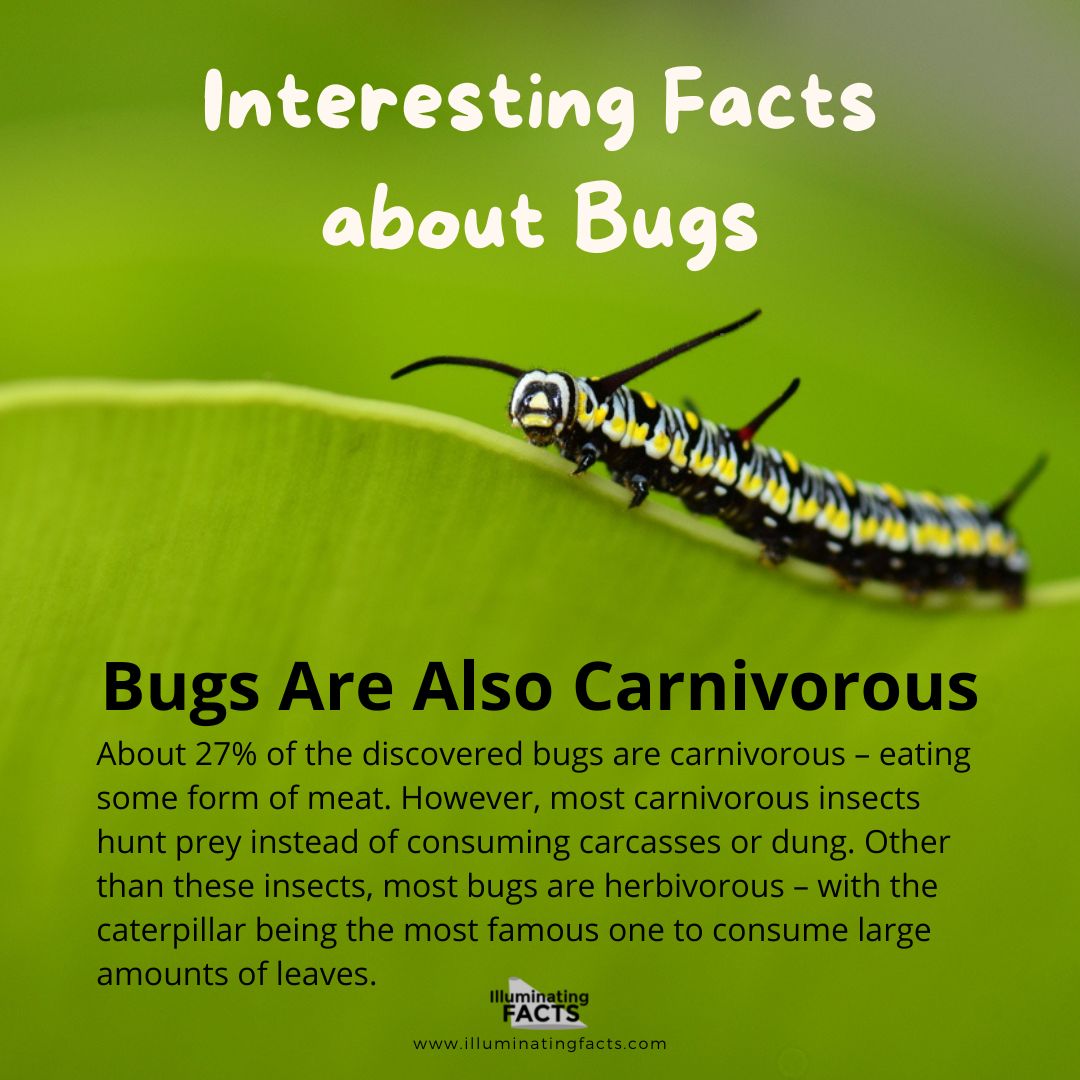
About 27% of the discovered bugs are carnivorous – eating some form of meat. However, most carnivorous insects hunt prey instead of consuming carcasses or dung. Other than these insects, most bugs are herbivorous – with the caterpillar being the most famous one to consume large amounts of leaves. [9]
17. Ladybugs Feast on About 5,000 Bugs in Their Lifetime 
Ladybugs are generally well-known for their bright colors and otherwise harmless nature. However, farmers love having ladybugs on their farms as these bugs feast on other bugs, such as aphids. An average ladybug consumes about 5,000 insects in its lifetime. [10]
18. A Single Colony of Honeybees Can Produce About 10-200 Pounds of Honey 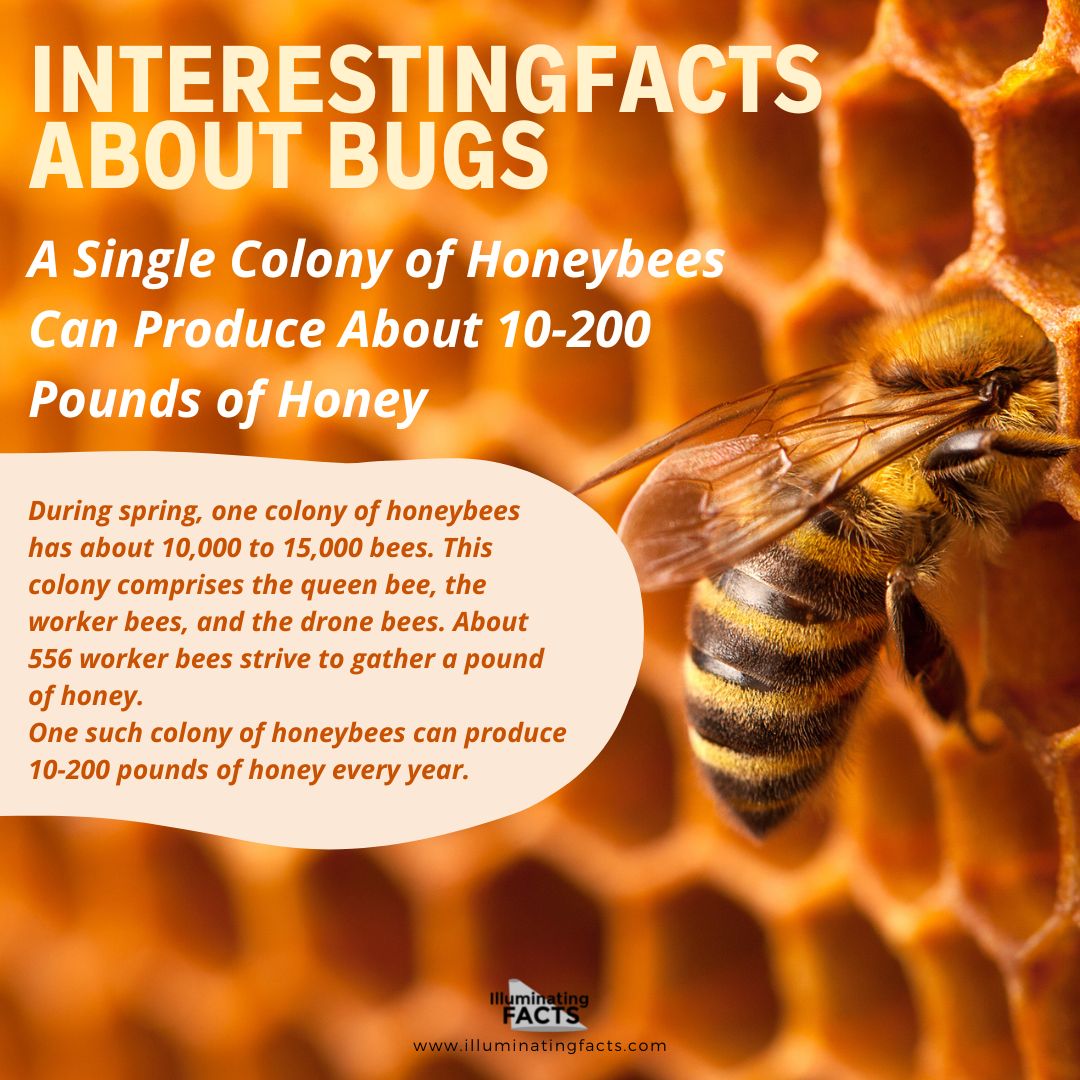
During spring, one colony of honeybees has about 10,000 to 15,000 bees. This colony comprises the queen bee, the worker bees, and the drone bees. About 556 worker bees strive to gather a pound of honey.
One such colony of honeybees can produce 10-200 pounds of honey every year. [11]
19. An Assassin Bug Piles up the Carcasses of Ants it has consumed on Its Body to Ward off the Predators 
As assassin bug, also called Acanthaspis petax, has a unique mechanism to ward off its predators. It stacks all the dead bodies of ants it has consumed on its body to confuse the predators. [18]
20. The Red Postman Butterfly Develops Poison in Its Body by Eating Toxic Plants 
The red postman butterfly draws its name from its distinctive routine behavior of visiting the same flowers every day via taking the same route. It is said that the red postman butterfly does not have poison producing system in its body. Instead, poison develops in its body as it feeds on the toxic plants.
It grows up to half an inch in size in its adult life and has a distinctive white mark on the body accompanied by black spots and long spines. It is a solitary insect that does not mate and might only live in small groups of 2 to 3. [19]
Conclusion
Bugs are very common in all parts of the world, and we encounter them every now and then. They’re often hard to get rid of as a result of their superior survival instincts, and this is not even mentioning how quickly they breed after hatching.
References
- World’s oldest bug is fossil millipede from Scotland. (2022, October 22). ScienceDaily. https://www.sciencedaily.com/releases/2020/05/200528115831.htm
- What is the world’s most venomous insect? The answer might surprise you. (2007, November 27). ThoughtCo. https://www.thoughtco.com/worlds-most-venomous-insect-607903
- There are bugs everywhere!(2022, August 22). Illuminating Facts – Interesting Facts, Charts and More!. https://illuminatingfacts.com/there-are-bugs-everywhere/#Interesting_Bug_Facts
- The insect Apocalypse is here (Published 2018). (2018, November 28). The New York Times – Breaking News, US News, World News and Videos. https://www.nytimes.com/2018/11/27/magazine/insect-apocalypse.html
- Can insects breathe in water?(n.d.). Integrated Crop Management. https://crops.extension.iastate.edu/blog/erin-hodgson/can-insects-breathe-water
- Popular tick species. (n.d.). Tickipedia – The Complete Tick Resource Site. https://www.tickipedia.org/popular-tick-species/
- Sericulture. (n.d.). UW Departments Web Server. https://depts.washington.edu/chinaciv/clothing/tsericu.htm
- This harmless caterpillar looks like a pit viper. (2018, April 3). National Geographic. https://www.nationalgeographic.com/animals/article/hawk-moth-caterpillar-snake-untamed-spd
- Just a moment... (n.d.). ResearchGate | Find and share research. https://www.researchgate.net/figure/Percentage-of-herbivorous-carnivorous-and-omnivorous-insects-in-the-SRI-plots_fig1_261614910
- Ladybug facts and photos. (n.d.). Animals. https://kids.nationalgeographic.com/animals/invertebrates/facts/ladybug
- (2019, January 7). How much honey can a beehive produce?Wildflower Meadows. https://wildflowermeadows.com/2019/04/how-much-honey-can-a-beehive-produce/
- Mexico gets a taste for eating insects as chefs put bugs back on the menu. (2013, July 23). the Guardian. https://www.theguardian.com/world/2013/jul/23/mexico-insect-cuisine-sustainable-food
- Super bug! World’s strongest insect revealed by Dr Rob knell. (2010, March 24). School of Biological and Behavioural Sciences – Queen Mary University of London. https://www.qmul.ac.uk/sbbs/news/items/super-bug-worlds-strongest-insect-revealed-by-dr-rob-knell.html
- BUG FACT!!!!!!! House flies savor… – Landlock pest control. (n.d.). Facebook – log in or sign up. https://m.facebook.com/LandlockPestControl/photos/a.776428025716464/5632012990157919/
- Fun facts about dragonflies | Three Rivers Park district. (n.d.). Three Rivers Park District. https://www.threeriversparks.org/blog/fun-facts-about-dragonflies
- 10 of the most interesting facts about bees & honey. (2010, May 19). Big Island Bees. https://bigislandbees.com/blogs/bee-blog/14137349-interesting-bee-honey-facts
- DUBACH, D. PRATT, F. SMITH , C. M. STEWART. (n.d.). Possible Role of Glycerol in the Winter-Hardiness of Insects. Nature.com. https://www.nature.com/articles/184288b0
- Stromberg, J. (2012, May 8). This insect uses its victims’ carcasses as camouflage. Smithsonian Magazine. https://www.smithsonianmag.com/science-nature/this-insect-uses-its-victims-carcasses-as-camouflage-83656246/
- Postman butterfly. (2022, July 11). Wildlife Around the World – Wildlife Be Wild and Forever Free. https://wildlifearoundtheworld.com/wildlife-information/postman-butterfly/

